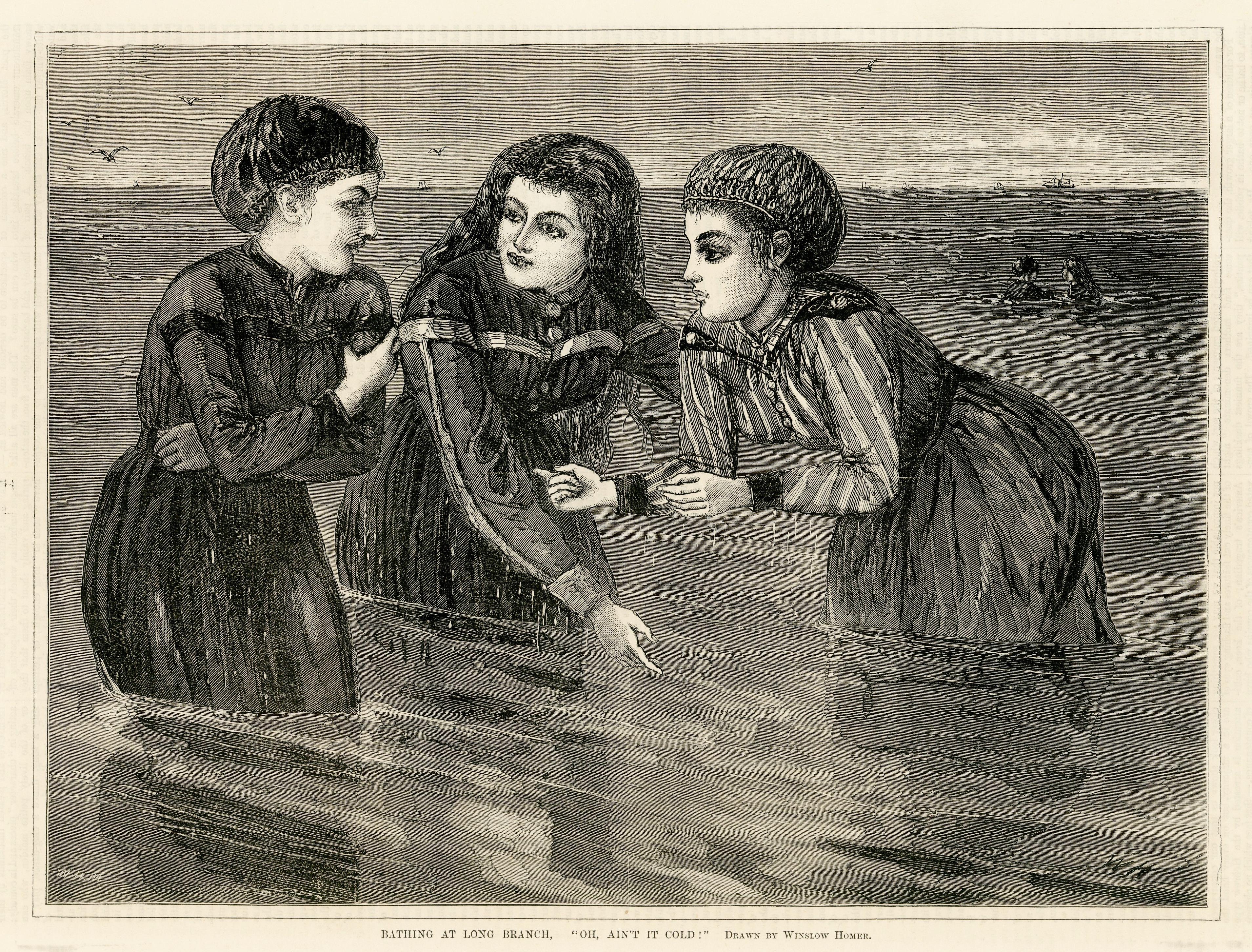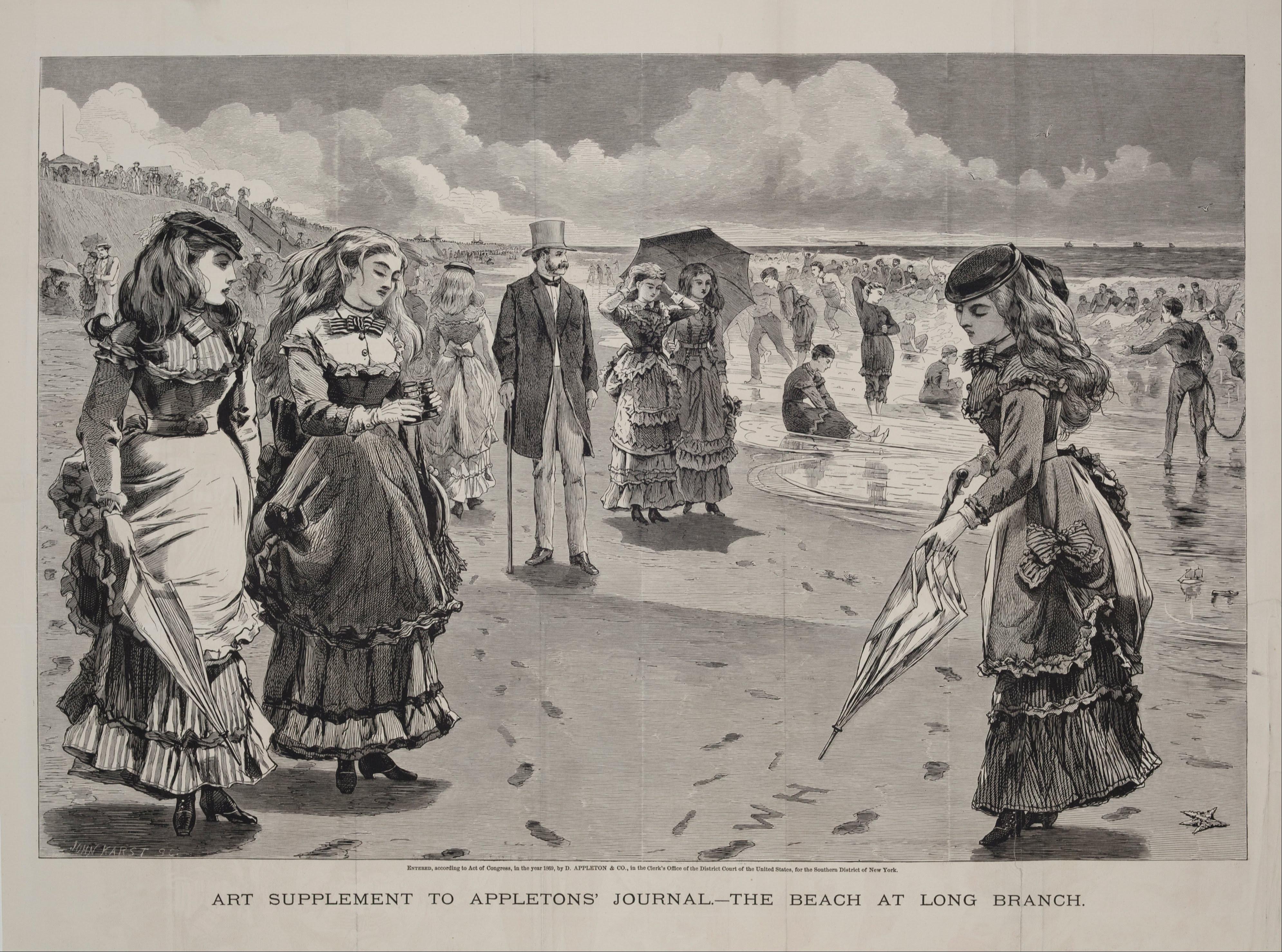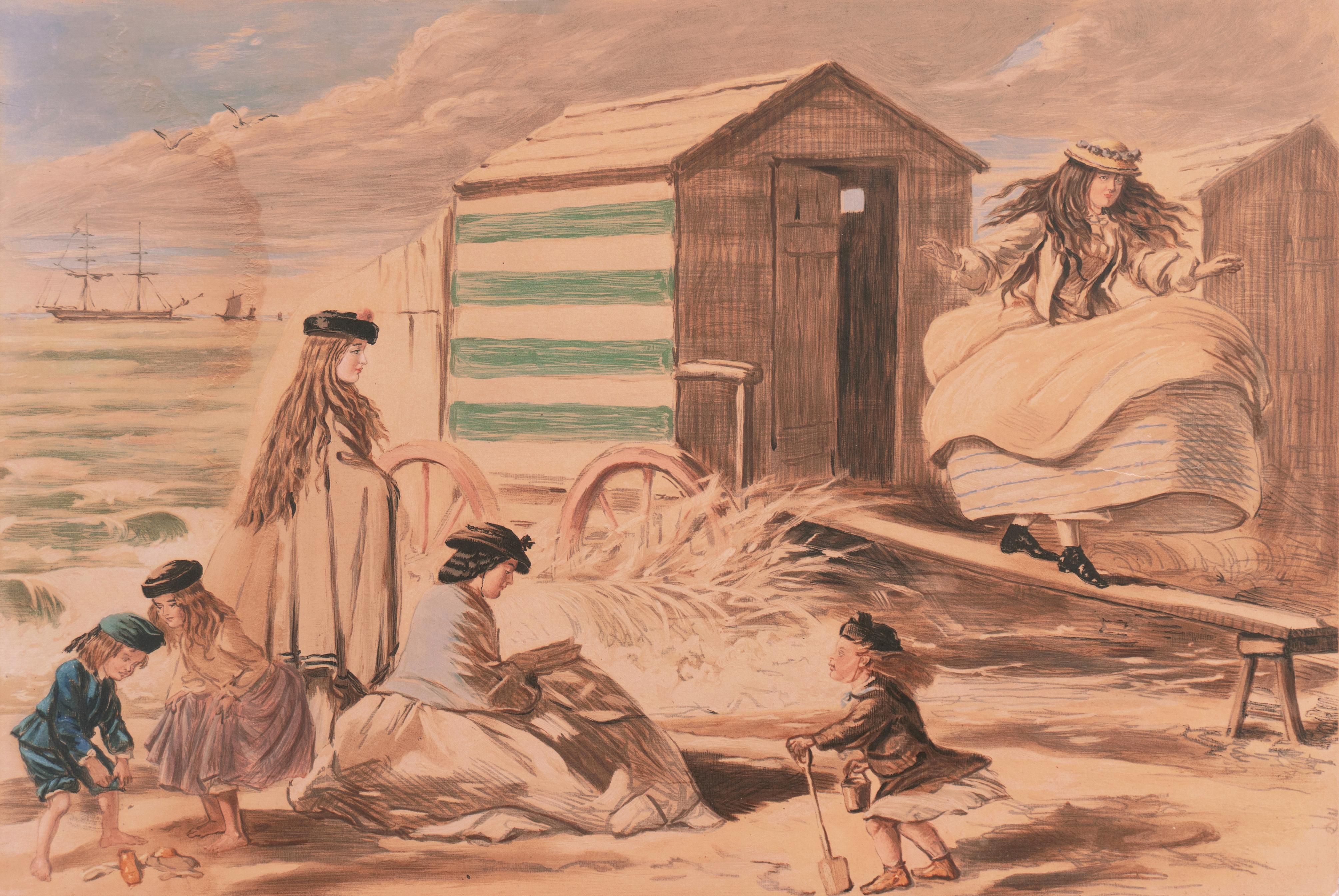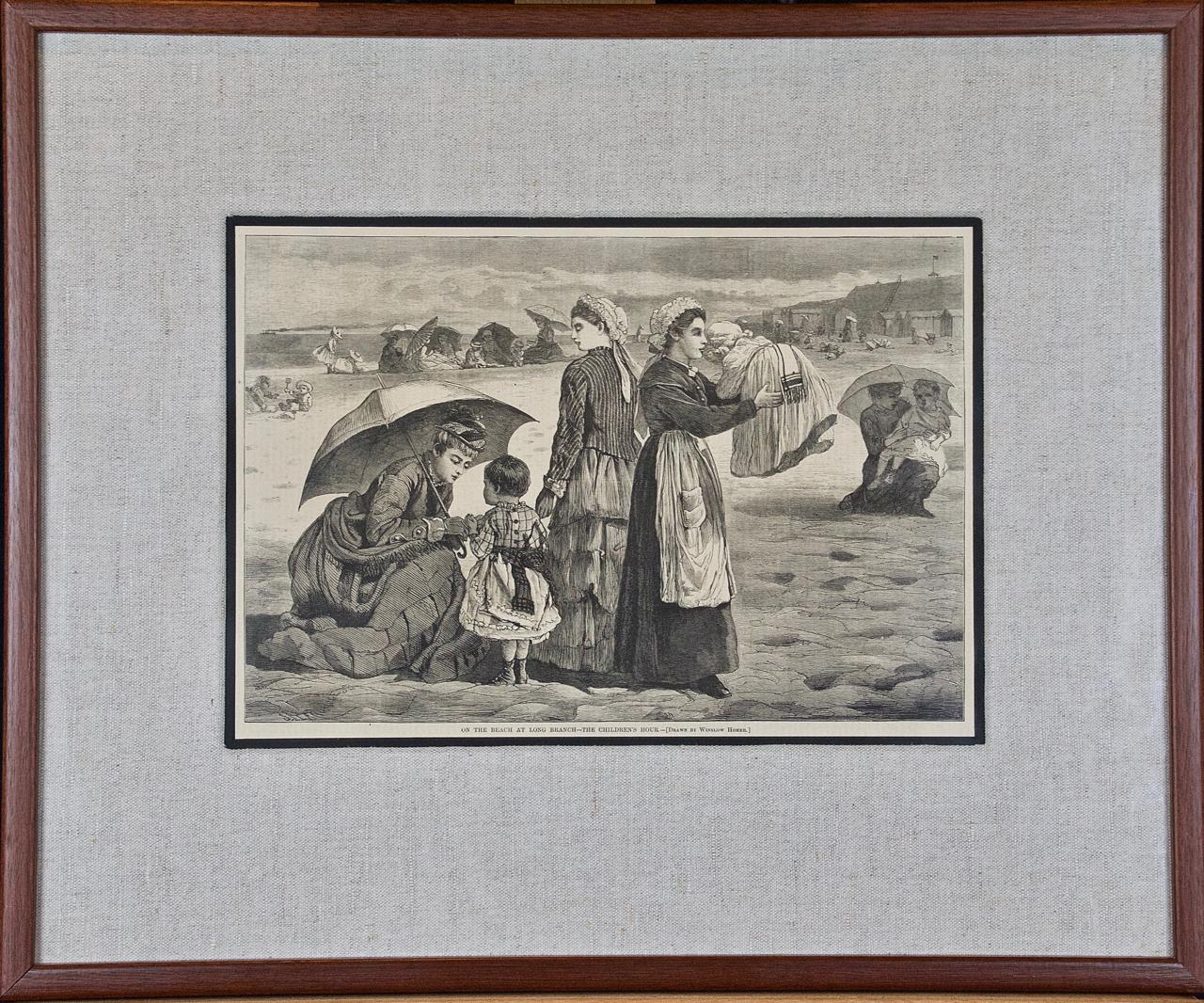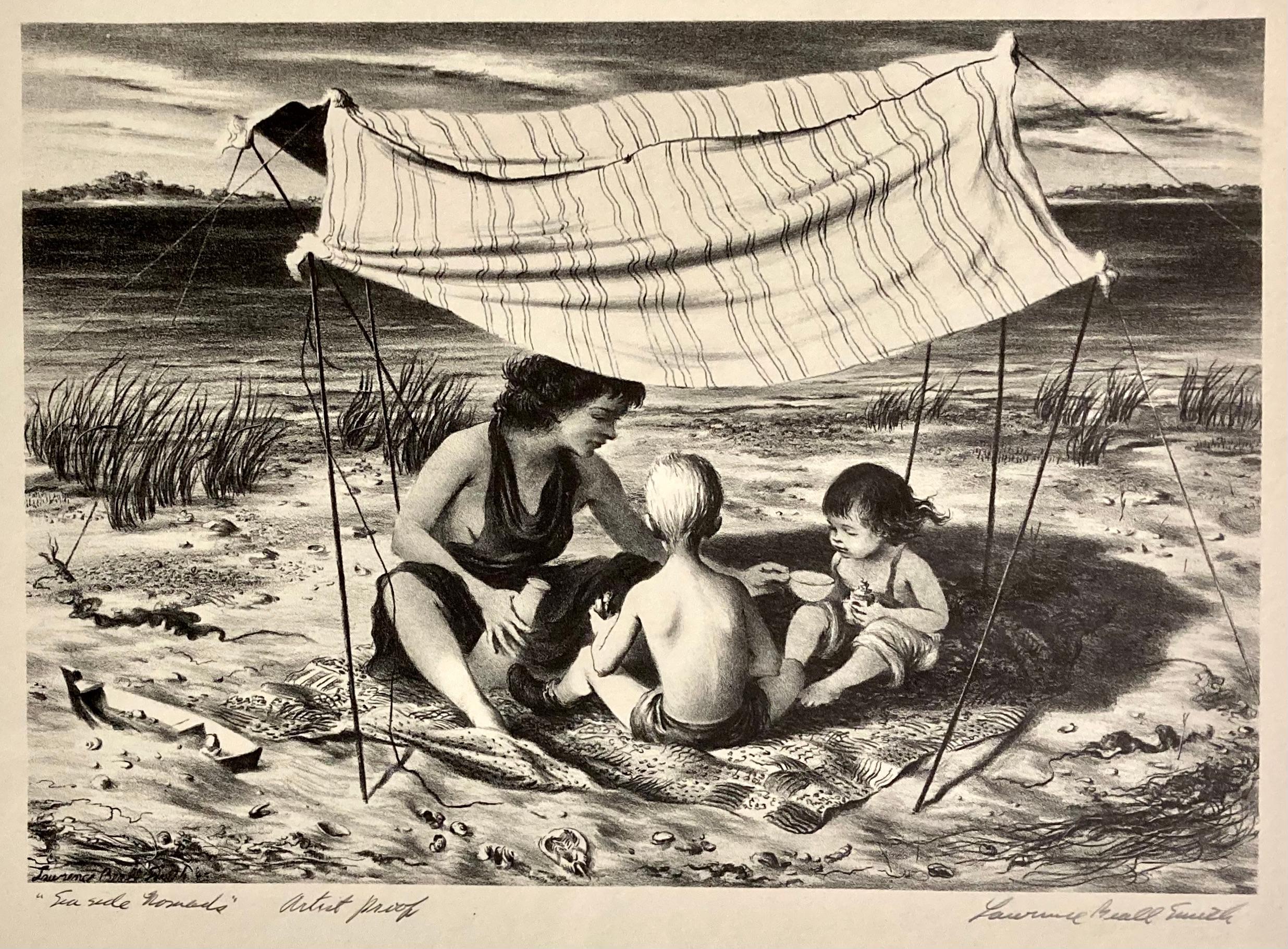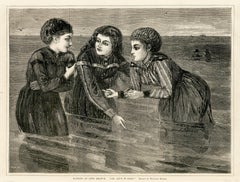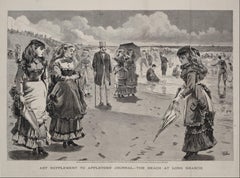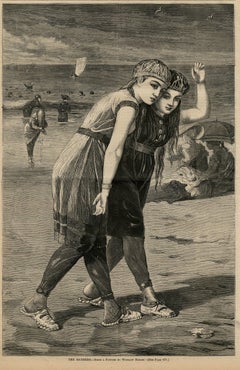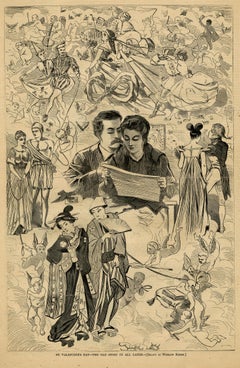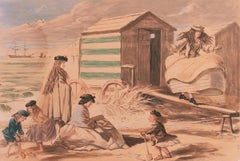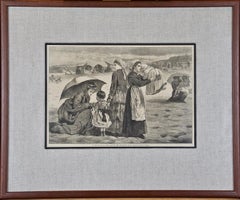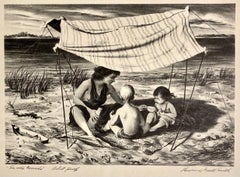Items Similar to On the Beach at Long Branch - The Children's Hour
Want more images or videos?
Request additional images or videos from the seller
1 of 7
On the Beach at Long Branch - The Children's Hour1874
1874
$400
£310.03
€351.03
CA$572.57
A$624.33
CHF 324.50
MX$7,474.07
NOK 4,115.90
SEK 3,855.31
DKK 2,621.73
About the Item
On the Beach at Long Branch - The Children's Hour
Wood engraving, 1874
Published in "Harper's Weekly" August 15, 1874 (p. 672)
Image size: 9 1/4 x 13 5/8 inches
Provenance: Wunderlich & Co., New York (label)
Mongerson Galleries, Chicago (label)
References: Beam 214
Kushner, Gallati & Ferber 54
Condition: Small tear in left margin, 1-3/4" up from l.l. corner, not effecting image.
- Creation Year:1874
- Dimensions:Height: 9.25 in (23.5 cm)Width: 13.625 in (34.61 cm)
- Medium:
- Movement & Style:
- After:Winslow Homer (1836 - 1910, American)
- Period:
- Condition:Small tear in left margin, 1-3/4" up from l.l. corner, not effecting image.
- Gallery Location:Fairlawn, OH
- Reference Number:Seller: FA77421stDibs: LU14014970702
About the Seller
5.0
Recognized Seller
These prestigious sellers are industry leaders and represent the highest echelon for item quality and design.
Gold Seller
Premium sellers maintaining a 4.3+ rating and 24-hour response times
Established in 1978
1stDibs seller since 2013
822 sales on 1stDibs
Typical response time: <1 hour
Associations
International Fine Print Dealers Association
- ShippingRetrieving quote...Shipping from: Fairlawn, OH
- Return Policy
More From This Seller
View AllBathing at Long Branch-“Oh, Ain’t it Cold”
By Winslow Homer
Located in Fairlawn, OH
Bathing at Long Branch-“Oh, Ain’t it Cold”
Wood engraving, 1871
Signed in the block with the artist's initials "WH", see photo
Published in: Every Saturday, Aug. 16, 1871
Condition: ...
Category
1870s Hudson River School Figurative Prints
Materials
Woodcut
The Beach at Long Branch
By Winslow Homer
Located in Fairlawn, OH
The Beach at Long Branch
Woodengraving, 1869
Signed in the block lower right "WH" ( see photo )
Published in Appleton’s Journal of Literature, Science and Art, August 21, 1869
Condit...
Category
1860s American Realist Figurative Prints
Materials
Engraving
The Bathers
By Winslow Homer
Located in Fairlawn, OH
The Bathers
Woodengraving, 1873
As published in Harper's Weekly, August 2, 1873 (p. 668)
Provenance:
Wunderlich & Co., Inc., New York, NY (Their stock no. 84.003.8 in pencil recto a...
Category
1870s American Realist Figurative Prints
Materials
Woodcut
St. Valentine's Day -- The Old Story in All Lands
By Winslow Homer
Located in Fairlawn, OH
St. Valentine's Day -- The Old Story in All Lands
Wood engraving, 1868
Published in: Harper's Weekly, February 22, 1868
Titled and signed in the block
Image size: 13 5/8 x 9 inches
C...
Category
1860s Hudson River School Figurative Prints
Materials
Engraving
New England Coast (Greenport, New York)
By Stow Wengenroth
Located in Fairlawn, OH
New England Coast (Greenport, New York)
Lithograph, 1969
Signed in pencil lower right (see photo)
Edition: 350
Published in the book, Stow Wengenroth's New York, 1969
Limited slipcas...
Category
1960s American Realist Landscape Prints
Materials
Lithograph
Campbell Beach, Mentor
By Emma Lane Payne
Located in Fairlawn, OH
Signed and dated by the artist in ink lower left.
Annotated in pencil lower left: "Campbell Beach, Mentor"
Provenance:
By descent from the estate of the artist.
You May Also Like
'At the Beach, Scene at Sandbath', Punch Magazine, Thomas Agnew, Victoriana
Located in Santa Cruz, CA
Signed lower left, outside of design, 'John Leech' (British, 1817-1864) and created circa 1865. Titled verso, 'Scenes at Sandbath', and inscribed, 'The female Blondin out done! Grand...
Category
1860s Figurative Prints
Materials
Paper, Cardboard, Lithograph
Antique Oil Painting Victorian Family Beach Outing
Located in Douglas Manor, NY
6072 Victorian famaily beach outing signed
Period frame
Image size 13.5x27.5"
Category
1940s Landscape Paintings
Materials
Oil
Winslow Homer Framed Original 19th Century Wood Engraving "On the Beach"
By Winslow Homer
Located in Alamo, CA
This Winslow Homer wood engraving entitled "On the Beach at Long Branch, The Children's Hour", was published in Harper's Weekly in the August 15, 1874 ed...
Category
1770s American Impressionist Landscape Prints
Materials
Engraving
$780 Sale Price
20% Off
Lawrence Beall Smith, Seaside Nomads
By Lawrence Beall Smith
Located in New York, NY
A perfect summer day. A young mother, little boy, and even smaller girl have their luncheon under a make shift 'fly' -- a stripped cloth canopy fixed up with poles. Although it is titled 'Seaside Nomads,' to me it has the look of a bay or inlet. It's relatively flat and there are all sorts of grasses, old...
Category
Mid-20th Century Ashcan School Landscape Prints
Materials
Lithograph
Diane Thorne Children at The Beach
By Diana Thorne
Located in San Francisco, CA
Diane Thorne: 1895-1963. Listed Canadian artist who was born in Russia. She is best known for her etchings of dogs and children. She has auction results as high as $1300 for a single...
Category
1940s American Realist Figurative Prints
Materials
Etching
Enfants à la plage (“Children at the Beach”)
Located in Stockholm, SE
Albert Roosenboom was a Belgian genre painter celebrated for his elegant depictions of everyday life in the mid to late 19th century. A pupil of the renowned Constantin Meunier, Roos...
Category
1870s Romantic Figurative Paintings
Materials
Oil, Wood Panel
More Ways To Browse
Camille Pissarro Signed
Carlos Merida Silkscreens
Carlos Schwabe
Chagall Coq
Chagall Moses Tablets
Chagall Offset Lithographs
Chagall Paradis
Charles Bragg Signed Prints
Dali Art Of Love
Dali Bird
Dali Don Quixote
Dali Dragon
Dali Le Cavalier
Dali Lithograph Bullfighter
Dali Signed Lithograph Numbered
Dali Virgil
Damien Hirst Gold
David Hockney Diver
